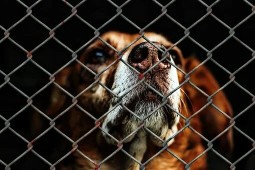Cotzee’s Animal Ethics in Disgrace and The Lives of Animals.
Analyzing Cotzee's Animal Ethics in Disgrace through Language and Silence.

Language and silence inform the power relations between different subjectivities in J.M Cotzee’s Disgrace. The protagonist, David Lurie makes claims on the ethical identities of others through the medium of language and with time is faced with the silence of animals who gradually begin to make claims on him as claimants of ethical consideration. Lurie’s changing attitude and his work with the dead dogs can be better understood by juxtaposing it with Elizabeth Costello’s animal ethics as expounded in Cotzee’s The Lives of Animals.
David Lurie displays a special relationship with animals when we first meet him in the book : he controls them in the realm of language, his domain of expertise. The various human “others” that inhabit the novel and his relation to them are expressed in animal imageries whether it is ” vixen “, a “hare” or ” dog”. The categories of the subject-object that language creates isn’t power neutral. Lurie understands this very well and time and again we see him mould the objects of his speech as per his wishes, disregarding the integrity of the subject that he tries to objectify.
The psycho-geographic shift from town to the country following his exploitation of Melanie not only causes a shift in his power relation vis-a-vis the human characters but also shifts the animals from the realm of language to the realm of real world and actual contact. Initially when he arrives at Lucy’s farm his attitude towards the animals fall within the range of indifference and condescension. Lucy’s dogs become a source of annoyance as they disturb his sleep and he talks about animals in a patronizing tone while asking Lucy to “get some perspective”. Interestingly, the exact phrase is used by the opposing professor who debates Elizabeth Costello, the advocate of animal ethics in The Lives of Animals.
Lurie experiences the other side of power relations when Lucy is raped by the three black men and he is physically assaulted. Language fails him when confronted with Lucy’s silence and Petrus’ unpredictable taciturnity. Silence, a choice in humans and a reality in animals disarms a man who has relied on language and forces him to respect that choice, respect that reality by seeing them and in their terms, not his. It is in the company of mute animals that he finds some degree of companionship that does not need the construct of language with an accompanying power equation. His empathy towards the bitch and the degree with which he relates to the two Persians, gauged by his hesitation in eating their flesh is something Elizabeth Costello would be proud of.
An attitudinal shift vis-a-vis language and the power that it wields is detected when we consider that the man who sought to stake a claim over the real name of Soraya and toyed with idea of moulding “Melanie” to ‘Melànie‘ refuses to name Bev’s Driedpoot, showing mistrust for the power of naming. The disgrace and suffering which visits the dying and the dead dogs remind him of some of his own limitations and by the end of the book this proud professor finds companionship in a dying dog whom he gives up for euthanasia despite developing attachment towards it, for the dog is not his object but a suffering subject whose need for a silent closure must be respected.
Many have interpreted Lurie’s work with the dogs as an acknowledgement of his disgraced situation, his working out a personal salvation, expitiation of guilt and the development of empathy for the downtrodden that he experiences first-hand. It is also important to understand Lurie’s work as an expression of Cotzee’s philosophy of animal ethic based on kind-ness as seen in The Lives of Animals. The intuitive and relatable suffering that Lurie’s work with the dead dogs he witnesses provokes an ethical attitude towards suffering which is close to Tom Regan’s view that it is the “capacity to suffer” which qualifies a living creature as an ethical object. Levinas’ theory of the “role of the face” has been used to explain the ethical response of Lurie towards other characters by Michael Marais. This is further given a post-humanist treatment by Calina Ciobanu. However what the former does not imply and the latter doesn’t fully examine in Lurie’s misreading of Lucy’s decision due to his own “racial presuppositions and failure to transcend discursive inscribed relations of contestation within his culture” is that it is precisely this ‘failure’ by virtue of being human which allows and results in his empathetic engagement with the dogs which in turn impacts his ethical development vis-a-vis human “Others”. He comes to recognise and respect the sacred boundary of Being, the transgression of which had been his the greatest fault : the recognition that object is also a subject possessing the language of silence with whom one may enter into a communion without necessarily communicating.
Lurie’s volunteering in the Clinic and the relation he develops with the dead dogs needs to be contextualised not only in relation to apartheid and Lucy’s rape. It must also be set up against his attitude towards other subjects and the role of language in shaping such an attitude. Lurie who employed language to make claims on the lives of others is in turn claimed by the silence of the dogs who ‘adopt’ him, who make a claim on him right till the end and it is by fully empathising with the animals, of attempting to understand what it is to be like them that David Lurie develops the type of kindness that Elizabeth Costello envisages. Kindness not in the usual sense of the term but as Costello uses it in her lecture : kindness by virtue of realising one’s kind-ness with the animal , an acknowledgement of being the same kind.


A pleasurable read indeed . Much appreciated.
Your analysis of Disgrace was really useful for my assignment. Thanks!